Arthropods are invertebrates with exoskeletons, segmented bodies, and jointed limbs. They include insects, arachnids, and crustaceans. Known for their adaptability, arthropods make up the largest animal phylum on Earth. This article covers their key characteristics, examples, and why they are so successful.
Key Takeaways
-
Arthropods, belonging to the phylum Arthropoda, are characterized by their hard exoskeleton, segmented bodies, and jointed appendages, which allow for high adaptability and mobility.
-
The phylum is divided into four major subphyla—Chelicerata, Crustacea, Hexapoda, and Myriapoda—each hosting diverse species that play crucial roles in ecosystems.
-
Arthropods exhibit a wide range of adaptations enabling their survival in various environments, and they have significant interactions with humans, both beneficial as pollinators and harmful as pests.
Defining Arthropods
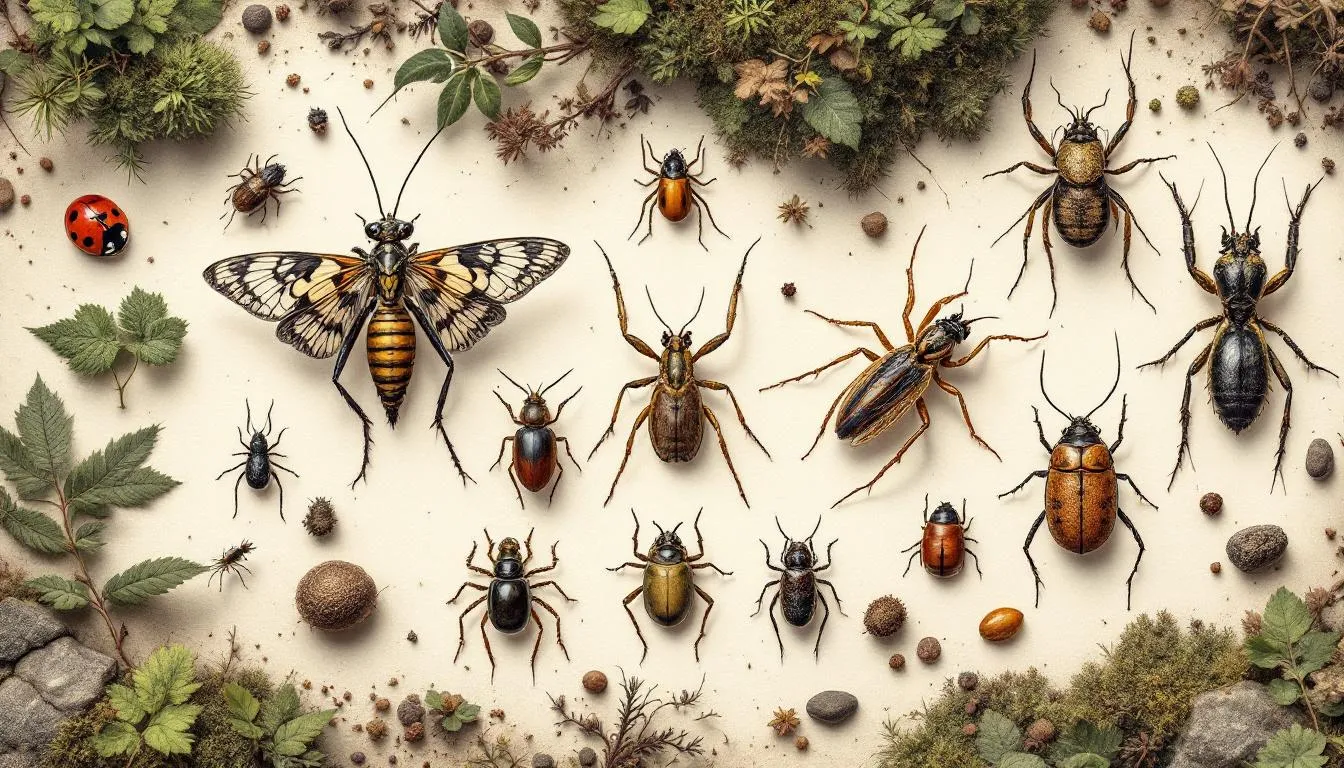
Arthropods are classified as invertebrates within the phylum Arthropoda. This phylum is one of the most successful groups in the animal kingdom, encompassing a vast array of species that include insects, arachnids, and crustaceans. One of the most striking features of most arthropods is their hard exoskeleton, which provides protection and structural support. This exoskeleton is made of chitin, a robust material that can be reinforced with minerals for additional durability.
Another key characteristic of arthropods is their segmented bodies. These segments can specialize for different functions, allowing for a high degree of adaptability and specialization. For example, some segments may develop into wings, while others form legs or antennae. This segmentation, combined with jointed appendages, gives arthropods remarkable flexibility and mobility. These jointed limbs enhance their ability to move in various environments, making them one of the most adaptable groups of animals.
The types of animals included in the arthropod phylum are diverse and numerous:
-
Insects, such as beetles and flies, are perhaps the most well-known arthropods.
-
Arachnids, including spiders and scorpions.
-
Crustaceans, such as crabs and shrimp.
Each of these subgroups has unique characteristics and adaptations that enable them to thrive in a wide range of habitats.
Major Groups of Arthropods
The phylum Arthropoda is divided into four major subphyla:
-
Chelicerata
-
Crustacea
-
Hexapoda
-
Myriapoda
Each of these main groups includes a variety of different species with unique adaptations and characteristics that enable them to thrive in different groups and environments.
Chelicerata includes arachnids such as spiders, scorpions, and ticks. Most of these species are terrestrial and have specialized appendages called chelicerae, which they use for feeding. Arachnids are known for their role in controlling insect populations, making them essential components of many ecosystems.
Crustacea, on the other hand, primarily consists of marine creatures like crabs, lobsters, and shrimp. These animals are equipped with gills for respiration and are vital to marine food webs.
Hexapoda, the largest subphylum, includes all insects, which are characterized by having six legs. Insects are incredibly diverse, with millions of species adapted to virtually every habitat on Earth. They play crucial roles as pollinators, decomposers, and even as food sources for other animals.
Myriapoda includes centipedes and millipedes, which are typically found in moist environments. These arthropods have elongated bodies with numerous segments and are known for their role in breaking down decaying organic matter.
Evolutionary History of Arthropods
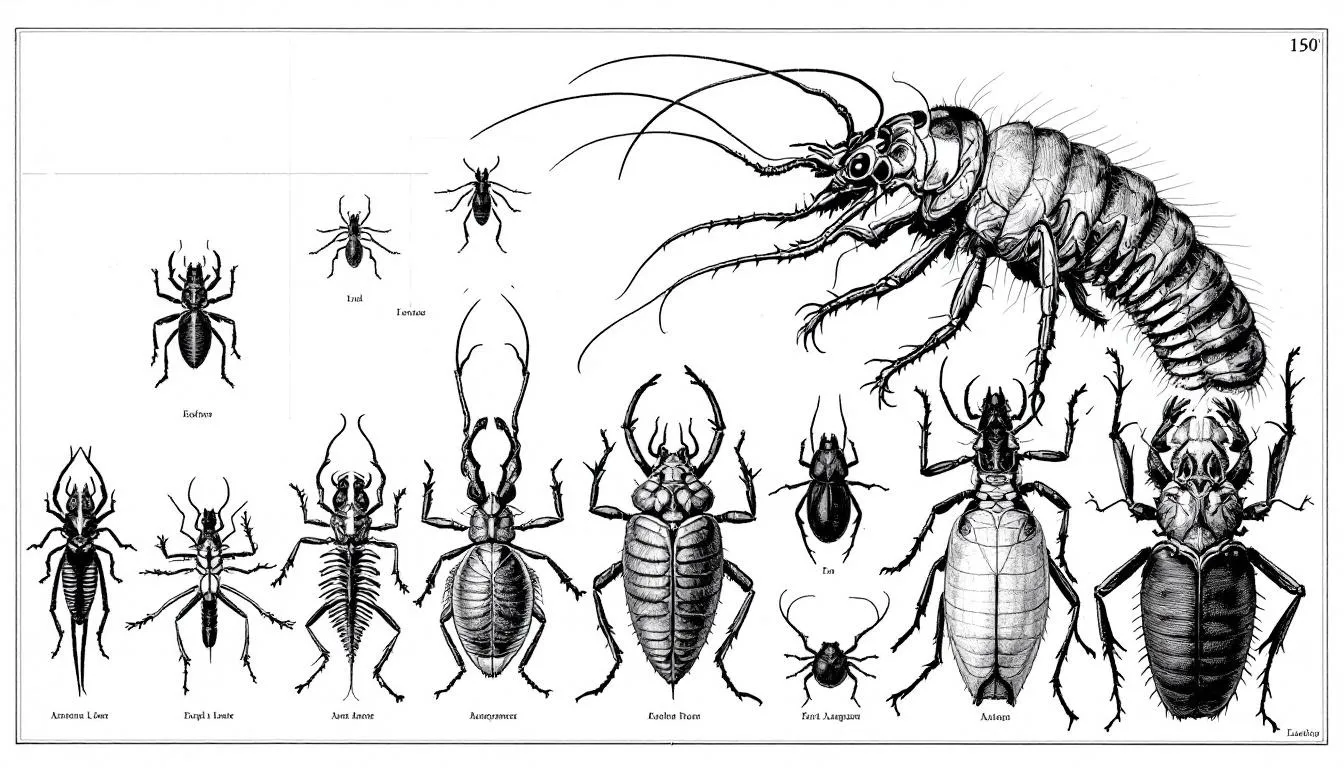
Arthropods are believed to have evolved over 500 million years ago during the Cambrian period. This period is significant for the emergence of many major animal groups, including trilobites. Fossils from this time indicate that early arthropods had segmented bodies, a characteristic that has persisted through their evolution.
The evolutionary history of arthropods is marked by their incredible adaptability and diversity. They are the largest phylum in the animal kingdom, making up around 84% of all known animal species, including various arthropod species. This success can be attributed to their ability to inhabit a wide range of environments, from deep oceans to terrestrial habitats. As arthropods grow, their segmented bodies and jointed appendages have allowed them to evolve various forms and functions, enabling them to exploit different ecological niches.
The phylum Arthropoda is typically classified into four major subphyla:
-
Chelicerata
-
Crustacea
-
Hexapoda
-
Myriapoda
Each of these groups represents a unique evolutionary path, showcasing the adaptability and resilience of arthropods. Their long evolutionary history and the persistence of key characteristics highlight their remarkable ability to survive and thrive in diverse environments.
Arthropod Anatomy
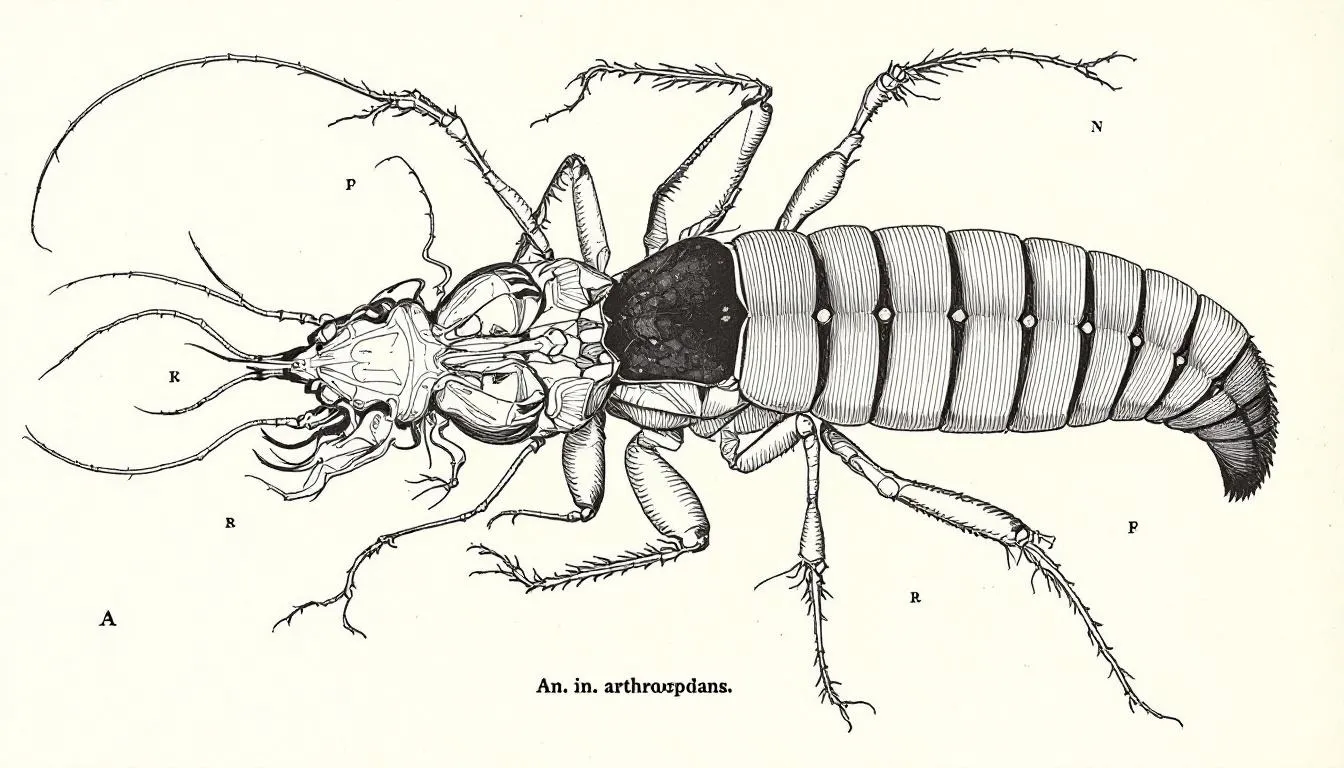
The anatomy of arthropods is a marvel of evolutionary engineering. Their exoskeleton, composed of chitin, provides both protection and structural support. This tough outer layer serves multiple functions, including defense against predators and prevention of water loss in terrestrial species. In some cases, the exoskeleton can be reinforced with minerals, adding an extra layer of protection.
Arthropods have segmented bodies, with each segment potentially specializing for different functions. This segmentation allows for a high degree of adaptability, as different segments can develop into various specialized structures such as wings, legs, or antennae. The jointed limbs of arthropods are particularly noteworthy, as they enhance mobility and allow for a greater range of movement. Some arthropods can even extend their limbs using hydraulic pressure, a unique adaptation that enhances their movement capabilities.
Sensory organs in arthropods are highly developed, with many species possessing compound eyes that provide a wide field of vision and the ability to detect motion effectively. These advanced sensory structures are crucial for survival, allowing arthropods to navigate their environments and detect predators or prey.
Respiratory systems in arthropods vary greatly in various ways, with some utilizing gills, while others depend on tracheae or book lungs for gas exchange.
Life Cycles of Arthropods
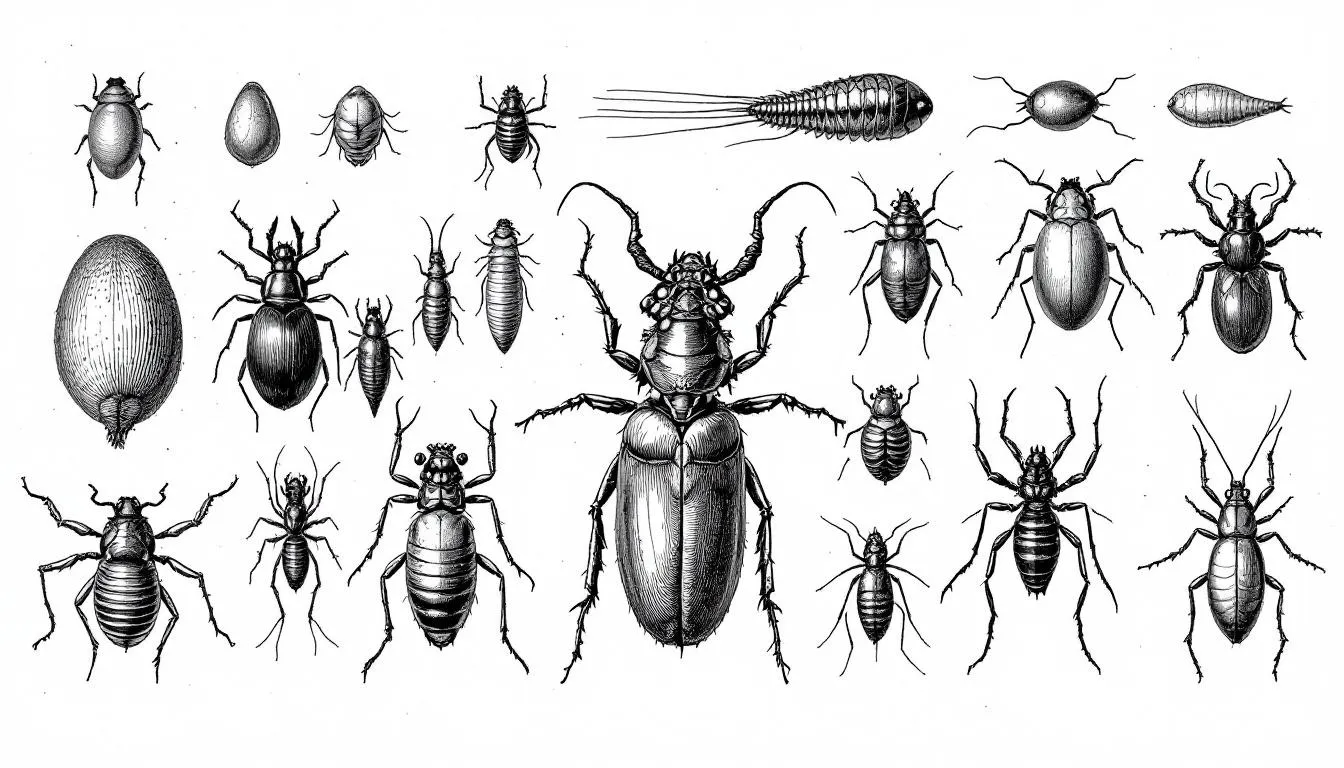
Arthropods exhibit diverse life cycles, often involving complex stages of development. One common life cycle is complete metamorphosis, which includes four distinct stages:
-
Egg
-
Larva: often dramatically different in form and function from the adult stage, allowing the larvae to exploit different ecological niches
-
Pupa: during this stage, significant internal reorganization occurs, preparing the organism for its final transformation into an adult
-
Adult
In contrast, some arthropods undergo incomplete metamorphosis, which consists of three stages: egg, nymph, and adult. In this life cycle, the nymph resembles a smaller version of the adult and gradually grows and develops through successive molts. This type of metamorphosis is common in many insects, such as grasshoppers and cockroaches.
Certain arthropods have unique reproductive strategies. For instance, scorpions give live birth instead of laying eggs, distinguishing them from many other arthropods. Despite these variations, arthropods lay eggs remains a common reproductive strategy among arthropods, showcasing their adaptability and diversity.
Arthropod Nervous Systems
The nervous system of arthropods is a highly specialized and efficient network. It features a dorsal brain and a ventral nerve cord organized into segments with ganglia. This ladder-like structure allows for precise control of movement and behavior, with each segmental ganglion regulating the functions of its corresponding body segment. This organization resembles that of annelid worms, indicating a shared evolutionary background.
In arthropods, movement and behavior are controlled through a network of paired nerve cords that extend to various body segments, providing a robust and adaptable system for responding to environmental stimuli. Muscle contraction in arthropods is typically determined by multiple types of neurons, each influencing a single muscle cell, allowing for fine-tuned and coordinated movements.
Arthropods and Their Habitats
Arthropods are incredibly versatile and can be found in every ecosystem on Earth, from the deep oceans to the highest mountains. Their adaptability has allowed them to colonize a wide range of habitats, including some of the most extreme environments such as snow-covered regions and scorching deserts. This remarkable adaptability is a key factor in their survival and proliferation.
Arthropods show a variety of adaptations for both aquatic and terrestrial habitats. For instance, crustaceans are well-suited to marine environments with their gills for respiration, while many insects have developed tracheal systems to breathe air. These adaptations enable them to thrive in diverse ecological niches, including terrestrial ones and terrestrial arthropods, and contribute to the ecological balance by acting as decomposers, breaking down organic material and recycling nutrients back into the ecosystem.
Their presence in various habitats also highlights their role in the food web. Arthropods serve as a crucial food source for many animals, including birds, mammals, and fish. Their ability to adapt to different environments and their ecological roles make them indispensable to the health and stability of ecosystems around the world.
Interaction with Humans
Arthropods have a dual nature in their interactions with humans, being both beneficial and harmful. On the beneficial side, many arthropods play essential roles as pollinators, which are vital for the production of fruits and vegetables. Bees, for example, are crucial pollinators that contribute significantly to agricultural productivity.
However, arthropods can also be seen as arthropod pests, particularly in agricultural settings. Although only about 1% of insects are considered pests, they can cause significant damage to crops, leading to substantial economic losses. Additionally, certain arthropods, such as mosquitoes and ticks, are vectors for diseases that affect humans and livestock, posing serious health risks.
Many cultures have recognized the nutritional value of arthropods and consider them a sustainable food source. Crickets and mealworms, for instance, are rich in protein and are being explored as alternative protein sources to meet the growing global food demand. This cultural perspective highlights the potential of arthropods to contribute to sustainable food systems.
Examples of Fascinating Arthropods
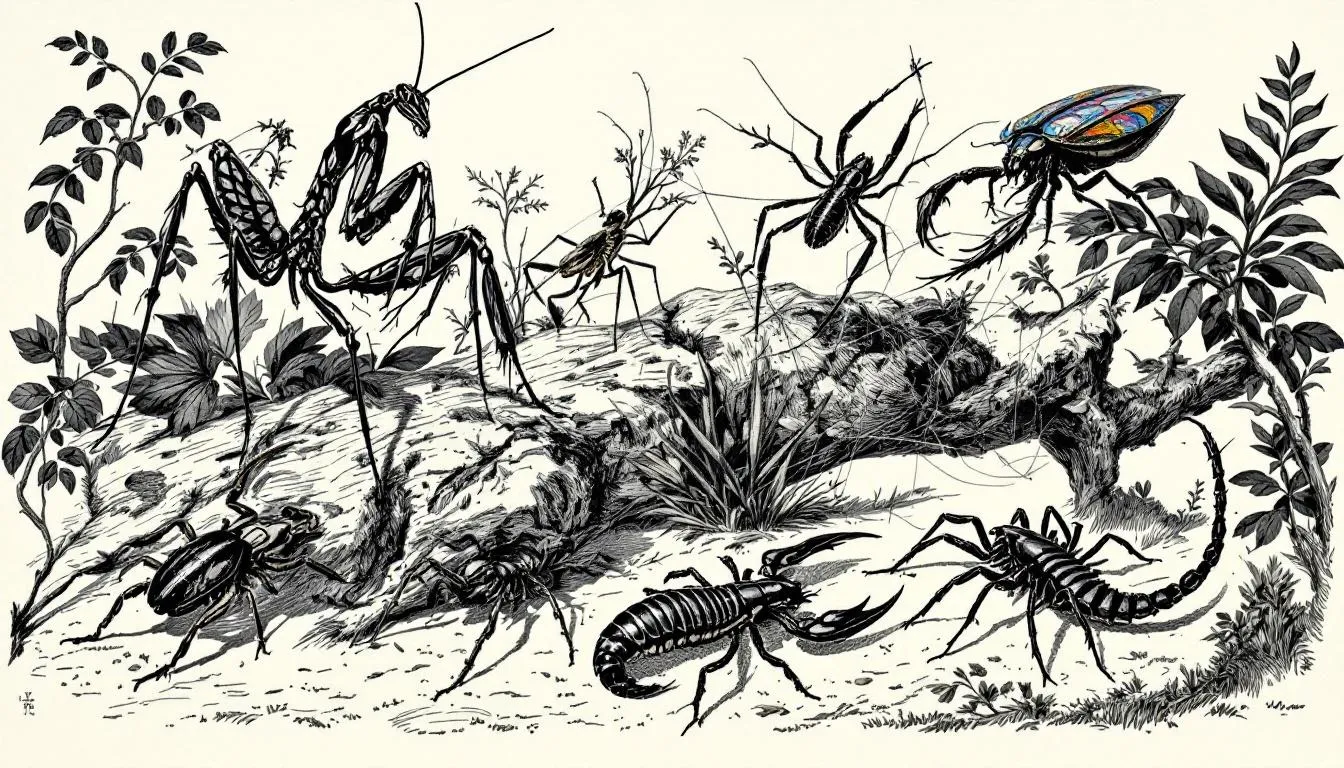
The world of arthropods is filled with fascinating examples that showcase their diversity and adaptability. The European lobster, native to the Atlantic Ocean, Mediterranean Sea, and Black Sea, is a prime example of a marine crustacean that has adapted to various oceanic environments. Its powerful claws and robust exoskeleton make it a formidable predator in its habitat.
The giant African millipede stands out for its size, being larger than other millipedes. It inhabits moist environments and plays a crucial role in breaking down organic matter.
The Mexican red knee tarantula, considered a vulnerable species, inhabits forests and deserts and is known for its striking appearance and docile nature.
The Asian forest scorpion, also known as the Malaysian forest scorpion, can grow up to 12 cm in length and is typically black in color. This impressive arachnid is adapted to forest habitats and is known for its defensive behavior.
The sun beetle, found in West and Central Africa, is another fascinating example of an arthropod adapted to its unique environment.
Arthropod Adaptations
Arthropods exhibit a wide range of adaptations that have contributed to their success and diversity. Some arthropods, like insects and certain crustaceans, have developed the ability to fly, which is unique among invertebrates. This adaptation allows them to escape predators, find food, and disperse to new habitats.
Sensory organs, known as sensilla, are often embedded within the exoskeleton of arthropods, allowing them to detect environmental changes. This sensory adaptation is crucial for survival, as it enables arthropods to respond quickly to threats and opportunities. Arthropods also exhibit various adaptations that allow them to thrive in extreme environmental conditions, including freezing, desiccation, and high salinity.
Some arthropods have developed various adaptations to survive unfavorable conditions:
-
Diapause: a form of dormancy that helps them survive through unfavorable conditions.
-
Cryptobiosis: a unique adaptation enabling certain arthropods to endure extreme dehydration and environmental stress.
-
Metabolic adjustment: the ability to adjust their metabolic processes to withstand drastic changes in their habitats.
These adaptations highlight the remarkable resilience and versatility of arthropods, making them one of the most successful groups of animals on the planet. Their ability to adapt to various environmental challenges ensures their continued survival and proliferation across diverse habitats.
Summary
Arthropods are truly remarkable creatures, showcasing an incredible diversity and adaptability that has enabled them to thrive in virtually every environment on Earth. From their complex anatomy and life cycles to their significant interactions with humans and their fascinating adaptations, arthropods continue to captivate and inspire us.
As we have explored, the success of arthropods can be attributed to their unique characteristics, evolutionary history, and adaptability. Their role in ecosystems, as both beneficial and harmful entities, highlights their importance in maintaining ecological balance. Understanding and appreciating these small but mighty creatures can deepen our connection to the natural world and inspire us to protect and preserve their habitats.
Frequently Asked Questions
What defines an arthropod?
An arthropod is defined as an invertebrate belonging to the phylum Arthropoda, characterized by its hard exoskeleton, jointed appendages, and segmented body structure. These traits distinguish arthropods from other animal groups.
What are the major groups of arthropods?
The major groups of arthropods are Chelicerata (such as spiders and scorpions), Crustacea (including crabs and shrimp), Hexapoda (like insects), and Myriapoda (such as centipedes and millipedes). Understanding these groups is essential for comprehending the diversity within the arthropod phylum.
How do arthropods adapt to different environments?
Arthropods exhibit remarkable adaptations to diverse environments by evolving traits such as flight, specialized sensory organs, and metabolic modifications that enable them to endure extreme conditions, including freezing temperatures and high salinity. These adaptations are crucial for their survival and success across various ecosystems.
What roles do arthropods play in ecosystems?
Arthropods are essential in ecosystems as they act as decomposers, pollinators, and a food source for various animals, thereby maintaining ecological balance and facilitating nutrient recycling. Their diverse functions highlight their importance in sustaining healthy ecosystems.
How do arthropods impact humans?
Arthropods significantly affect humans by providing essential benefits, such as pollination and serving as a sustainable food source, while also posing threats as pests and disease vectors. Therefore, understanding their role is crucial for balancing their advantages and disadvantages.









